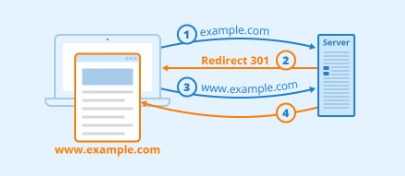How To Change Domain Names, Page URLs, and CMS Without Losing SEO Rankings?
Table of Contents
Introduction
Website owners may be intimidated by changing domain names, URLs, or content management systems (CMS). With careful planning and execution, it is possible to implement these changes without negatively affecting your SEO rankings. Here are some steps that will help you to implement the process.
1. Conduct a Comprehensive Audit of Your Website
Before you make any changes to your website’s domain name, URLs, or CMS, it’s important to perform a comprehensive SEO audit. To understand the current SEO status, identify top-performing pages and high-traffic keywords.
2. Implement 301 Redirects
When changing domain names and page URLs, it is important to implement 301 redirects to preserve SEO value. Redirect old URLs into new ones to direct site visitors and the search engines to the correct pages.
3. Update Internal Links
After changing a page’s domain name or URL, update all internal links on your website. Broken links can hurt UX (User experience) and SEO rankings. Make sure that all internal links are working correctly.
4. Notify Search Engines
Inform search engines of the changes made to your domain through Google Search Console. To ensure that search engines know the updated URLs, submit a sitemap, track crawl errors, and request reindexing.
5. Monitor performance
After making changes, monitor your site’s performance closely. Track keyword rankings, organic search traffic, and user engagement to determine the impact on your SEO.
6. Consider Professional Help
If you’re unsure how to change domain names, URLs, or CMSs without losing SEO rankings, then consider getting help from a professional SEO. They can offer valuable insight and guidance for a smooth transition.
Following these best practices and steps, you can easily change your domain name, URLs, and CMS without losing any SEO rankings. To maintain your website’s performance in terms of SEO, you must plan carefully, execute thoroughly, and monitor continuously.
The Importance of Proper Redirects When Changing Domain Names and Page URLs
It is important to know the importance of redirects when changing your domain name or page URLs. This will help you maintain your SEO ranking and traffic. Redirects inform search engines that a page or website is permanently relocated to a different location. You can ensure that users and the search engines are directed to the new URL or domain by implementing redirects.
The 301 redirect is one of the most common redirects. It indicates that content has been permanently moved. This redirect is recognized by search engines such as Google, which transfer the SEO value of the old URL to its new counterpart. This will help you maintain your site’s rankings and ensure that your website’s authority will be carried over to your new domain.

Users and search engine robots may encounter broken links due to domain changes, negatively impacting your SEO performance. These issues can be avoided by correctly setting up redirects and transitioning seamlessly to a new site without losing authority.
It is important to use 302 redirects in addition to 301 redirects when making temporary changes. This type of redirect tells search engines the move is temporary, and it helps you maintain your ranking until you’re ready to return to the original URL or domain. Implementing 301 and 302 correctly is crucial to keeping your website’s integrity and ensuring that users and search engine crawlers have a seamless transition.
You can protect your SEO rankings while making the necessary changes to your site’s structure. By following best practices for redirects and ensuring they are correctly set up, you will be able to do this. After the migration, monitor the performance and URLs of your new domain to ensure that any problems are addressed promptly.
Best Practices for Updating Internal Links After Changing Domain Names or Page URLs
You must update all internal links on your website when changing your domain name, page URLs, or both. This will ensure a smooth transition and prevent your SEO ranking from being affected. Here are some tips to update internal links.
First, thoroughly audit all the internal links on your site. Identify any links that require updating due to URL or domain name changes. Screaming Frog and SEMrush are tools that can automate the process.
Prioritize updating links for pages with high traffic or those with the most backlinks. The pages with the highest SEO value need to be updated most frequently.

When updating internal hyperlinks, ensure the anchor text is relevant to the destination page. Use the correct keywords that accurately describe the content of the linked pages. This improves the user experience and helps SEO by providing clear navigation.
Consider 301 redirects when updating internal links. Redirects guide users and bots to the newly created page, maintaining link equity and minimizing any negative SEO ranking impact.
After changing your page’s URL or domain name, you should check for the broken links on your site. Google Search Console can help you quickly identify and correct any 404 errors. Broken links can negatively impact user experience (UX) and SEO performance.
Update your sitemap to reflect the updated internal link structure. This will help the search engines index and crawl your website more efficiently. A well-organized sitemap improves your content’s discoverability and helps search engines understand the new link hierarchy.
Track any changes in organic traffic or rankings after the shift to ensure that you can address any issues quickly and maintain your site’s online visibility.
How to Preserve SEO Value When Migrating to a New Domain
Implementing 301 redirects will ensure a smooth transition when you change domain names, URLs, or CMS. Using 301 redirects, you can signal search engines that your website content has moved permanently. The SEO value of the old URLs will be transferred to the new ones. This helps you maintain your search engine ranking and traffic.

Setting up 301 redirects between old and new URLs will help you maintain the authority and relevancy you have developed over time. Google, for example, recognizes this signal and transfers the ranking power of the old pages to new ones. This is important if you have links pointing at your old URLs. It ensures the link equity will be passed to the new pages.
Maintaining the user experience by implementing 301 redirects correctly is also important. A 301 redirect will automatically direct users and search engines to your new URL when they land on the old one. This provides a seamless browsing experience. You can avoid users being frustrated when they cannot find the content they are looking for or encountering broken links.
Google Search Console: Strategies for Communicating Domain Name Changes to Search Engines
Communicating your new domain name to search engines to maintain your ranking is important. Google Search Console can help you make this transition as smooth as possible. Verify your old and new domain names in Google Search Console. This will allow you to access data and notifications about your website.
Google Search Console will ask you to submit a request for a new address after verifying the domains. This will inform Google that your website is moving to a different domain. Also, make sure that the 301 redirects are properly configured. This will preserve your SEO value, and ensure that users are directed seamlessly to the correct pages.

Google Search Console Dashboard: Monitor it regularly to see if there are any messages or notifications regarding domain name changes. Google may flag problems or provide feedback during the transition. Avoid any negative SEO ranking impact by addressing any issues immediately.
Update your sitemap to reflect the new URLs for the domain. If you submit the updated sitemap, Google Search Console can index and discover your new pages more efficiently. This will help you transition to your new domain and ensure it is correctly reflected in the search results.
Takeaway Points
Maintaining your SEO rankings when changing domain names, URLs, or CMS is important. Redirects done correctly will help preserve the SEO value you have built up over time. It’s important to use best practices when updating internal links to maintain search engine visibility and ensure seamless navigation. When migrating from one domain to another, it is recommended that you use 301 redirects to preserve SEO value. They signal to search engine spiders that the change is permanent. Google Search Console can be used to inform search engines of domain name changes. This will ensure a smooth transition and accurate indexing by search engines. Following these best practices and strategies allows website owners to change their domain name, page URLs, or CMS without losing their SEO rankings.
Conclusion
Changing your domain name, URL or CMS in the digital world can be difficult. You can smooth the transition and maintain your SEO rankings with the right strategies. When making such changes, it is important to maintain proper redirects. You can transfer the SEO value of your old pages and domains to new pages by implementing 301 redirects. This will ensure your website remains on top of SERPs, even after changes.
Update internal links is a crucial step when changing URLs or domain names. You can avoid any issues with broken links and lost traffic by updating all internal hyperlinks within your website. It improves your user’s experience and tells search engines you have a well-maintained site. Updated internal links help search engine crawlers better navigate your website, leading to a higher ranking and improved indexing.
Implementing 301 redirects correctly will ensure that your website remains visible and authoritative in the eyes on search engines.
Search engines need to be informed about changes in domain names. Google Search Console allows you to notify Google about changes to domain names. You can also submit a sitemap for reindexing. This proactive approach enables search engines to update their records and minimizes the negative impact on SEO rankings. Search engines can be kept informed by providing the information they need. This will help to maintain your website’s visibility in search results.



